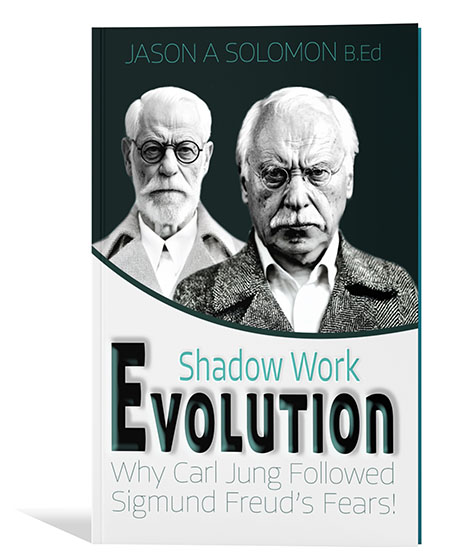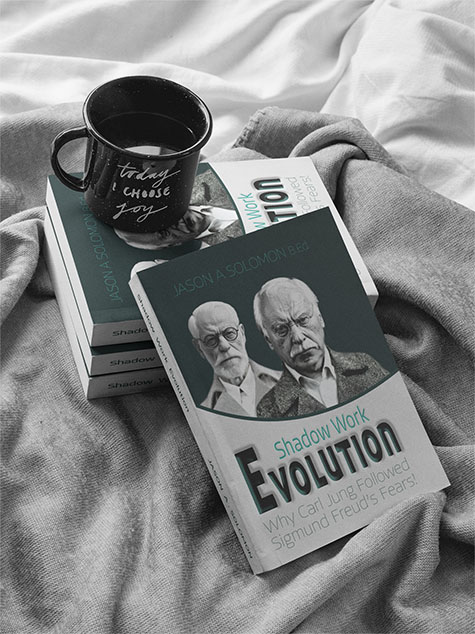Shadow Work Evolution
Uncovering the Roots of Shadow Psychology and the Rebirth of the Psyche
Purchase Options
🛒 Order your copy today from Amazon or Books.by and begin uncovering the hidden patterns that shape your emotions, choices, and relationships – before they continue unconsciously leading your life.
A transformative perspective on Jungian shadow work
This book made me feel seen in ways therapy never quite reached. The blend of Jung’s insights and modern emotional language helped me understand not just my triggers, but why they exist in the first place. Shadow Work Evolution isn’t just informative ~ it’s liberating.
Carl Jung would be proud
Shadow Work Evolution breathes new life into Carl Jung’s ideas with clarity and care. It honors his legacy while bringing his teachings into the now. A must-read for anyone serious about depth psychology and the journey of inner wholeness.
Deep, honest, and so well written
I’ve read many books on personal growth, but few hit like this. Shadow Work Evolution doesn’t sugarcoat the hard stuff ~ it guides you into it with compassion. If you’ve ever asked yourself “Why do I keep repeating the same patterns?”, this is the book that helps you find the answer.
The role of archetypes, myths, and symbols in inner transformation
By Jason A. Solomon, B.Ed.
Beneath our polished personalities lies a mirror – one held up by the shadow self. Shadow Work Evolution takes readers into the lineage of shadow psychology, unpacking the pivotal shift from Freud’s ego-focused lens to Carl Jung’s mythic, symbolic world of archetypes and inner integration. Written with clarity, curiosity, and depth, this book reveals how Jung’s legacy continues to influence emotional healing, spiritual inquiry, and identity formation in a complex world.
What readers will gain:
- A clear explanation of Jung’s concept of the shadow and its connection to archetypes
- Insight into the emotional and spiritual blocks that hinder transformation
- Understanding how culture, trauma, and unconscious patterns intertwine
- Real-life examples that bring shadow dynamics to life
- A reframed view of emotional pain as intelligent, not broken
- How Jung's break from Freud redefined emotional truth and personal growth
- Why projection, repression, and defense mechanisms still dominate relationships
- The role of archetypes, myths, and symbols in inner transformation
Shadow Work Evolution is both a tribute to Jung’s enduring wisdom and a practical guide for seekers in search of their inner truth. It empowers you to meet your darkness with discernment, compassion, and courage – not as a flaw, but as the beginning of personal evolution.
YouTube Channel - Jason A. Solomon
Emotional Highlights from Shadow Work Evolution
Eight evocative reflections that reveal the emotional complexity of shadow integration and the inner journey inspired by Carl Jung’s psychological insights.
Confrontation
“To meet your shadow is to meet everything you’ve denied — not just pain, but potential. Avoidance doesn’t silence it. It only grows in the dark.”
This truth invites the reader to face the suppressed pieces of self — not as flaws, but as dormant truths.
Awakening
“Carl Jung taught that what you resist not only persists — it dominates. The awakening begins the moment you stop resisting your reflection.”
A call to wake up from repression, and recognize that healing starts when we soften toward the unwanted parts.
Shame
“The shadow doesn’t begin with evil — it begins with embarrassment, with tears that weren’t safe to cry, with joy that wasn’t welcome.”
This moment shifts the idea of darkness away from malevolence and toward emotional memory — particularly those buried in childhood.
Resistance
“Most people don’t fear their shadow — they fear the responsibility of seeing themselves clearly. Change begins when projection ends.”
A tough mirror that points to self-responsibility — not in blame, but in the possibility of deeper freedom.
Compassion
“To heal is not to erase the wound — it’s to learn how to carry it with grace, without letting it define you.”
A reminder that integration isn’t perfection — it’s tenderness toward the self across time.
Integration
“When the light meets the dark, a new color is born. Integration is not neutrality — it’s transformation.”
Jung’s legacy lives in the alchemy of awareness — when the fragmented self becomes whole again.
Reflection
“The shadow shows up in others to teach you about yourself. Every judgment is an invitation to turn inward.”
A moment of humility — encouraging the reader to stop seeking enemies and start finding lessons.
Renewal
“You are not broken. You are becoming. And the journey through your shadow is how you remember what was never truly lost.”
A closing reassurance — the shadow is not your enemy, but your guide back to wholeness.
This Isn’t Just a Book ~ It’s a Mirror
Carl Jung believed we each carry an unseen self — a shadow shaped by memory, trauma, and forgotten truths.
This book invites you to stop running from it ~ and begin the work of becoming whole.
Let this be the moment you turn inward.
You will not lose yourself in the dark — you will find the parts you left behind.

